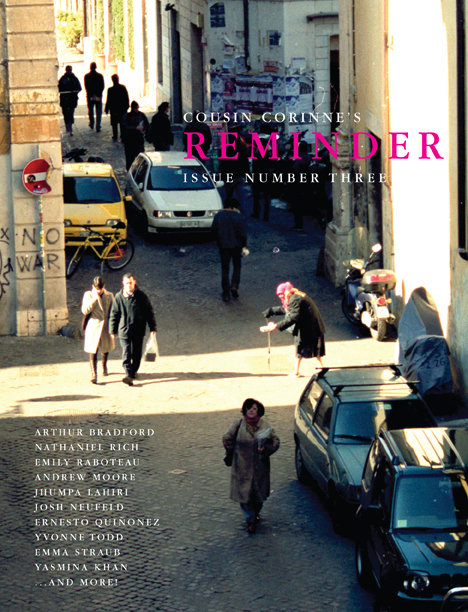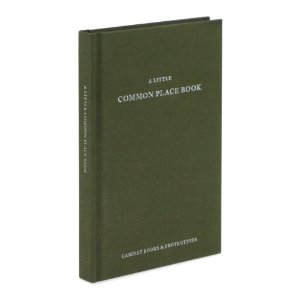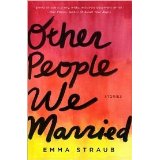
COUSIN CORINNES REMINDER ISSUE NUMBER THREE
HOT OFF THE PRESS, MAN!!!
SICK NEW PRICE = $14!!!
DOUBLE THE PAGE COUNT!!!

HOT OFF THE PRESS, MAN!!!
SICK NEW PRICE = $14!!!
DOUBLE THE PAGE COUNT!!!
This week, Ive been on a reading binge. Im taking the subway when I could walk, just for the added reading time. Im as thirsty for books as I am for iced tea. Here are a few books Ive gulped down in the last few days, books that will stay with me for ages, but especially through the steamy months ahead.
Tayari Jones, Silver Sparrow
Talk about a timely book! Jones novel about inside and outside families feels particularly necessary in the wake of Arnold Schwarzeneggers indiscretions. The book is told in the voices of the two daughters, the public and the private, and I was riveted throughout. Jones writes gracefully and honestly about her characters situation, and doesnt offer any pat resolutions.
Emma Forrest, Your Voice in My Head
Forrests memoir is about a double dose of heartbreakthe death of her beloved shrink and the death of a romance. The two relationships are so well-drawn that I too mourned their loss, and cried in public places.В Despite the subject matter, which includes suicide attempts and several scenes of self-mutilation, the book is often funny, and Forrest and her family are intensely likable.В (Note: Emma Forrest will be at BookCourt on 6/ 29)
Hayley Tanner, Vaclav & Lena
Tanners first novel begins with a pair of best friends in Coney Island: Vaclav, who wants to be a magician, and Lena, who is roped into becoming his glamorous assistant. They are both children of Russian immigrants, and there is much humor and warmth to be found in the borscht-flavored setting. Lenas story threatens to become tragic, but this book is more about the permanence of love than a single sad event. When Vaclav and Lena were grown, and the book was over, I was sorry to be out of their company.
Emma Straub
In his monumental and definitive new book, The Information, James Gleick makes frequent, mostly passing reference to Marshall McLuhan, the “medium is the message” man of the 1960s. Both of them wrote about the transition from print to electronic culture, McLuhan before it happened, Gleick while in the process.
The may be no better introduction to the subject, and certainly no more delightful window onto it, than Douglas Coupland’s Marshall McLuhan: You Know Nothing of My Work! Half a century later, McLuhan’s predictions about the end of print culture and the rise of “electronic inter-dependence” have become a reality—in a sense, the reality—of our time. Coupland, whose iconic novel Generation X was a “McLuhanesque” account of our culture in fictional form, has written a compact biography of the cultural critic that interprets the life and work of his subject from inside. A fellow Canadian, a master of creative sociology, a writer who supplied a defining term, Coupland is the ideal chronicler of the uncanny prophet whose vision of the global village—now known as the Internet—has come to pass in the 21st century.
Gleick, the author of the best sellers Chaos and Genius, now brings us in The Information: A History, a Theory, a Flood a work just as astonishing and masterly: a revelatory chronicle and meditation that shows how information has become the modern era’s defining quality—the blood, the fuel, the vital principle of our world. The story of information begins in a time profoundly unlike our own, when every thought and utterance vanishes as soon as it is born. From the invention of scripts and alphabets to the long-misunderstood talking drums of Africa, Gleick tells the story of information technologies that changed the very nature of human consciousness. And then the information age arrives. Citizens of this world become experts willy-nilly: aficionados of bits and bytes. And we sometimes feel we are drowning, swept by a deluge of signs and signals, news and images, blogs and tweets. The Information is the story of how we got here and where we are heading.
In this age of an open Internet, it is easy to forget that every American information industry, beginning with the telephone, has eventually been taken captive by some ruthless monopoly or cartel. With all our media now traveling a single network, an unprecedented potential is building for centralized control over what Americans see and hear. Could history repeat itself with the next industrial consolidation? Could the Internet—the entire flow of American information—come to be ruled by one corporate leviathan in possession of “the master switch”? That is the big question of Tim Wu’s pathbreaking book, appropriately entitled The Master Switch: The Rise and Fall of Information Empires. As Wu’s sweeping history shows, each of the new media of the 20th century—radio, telephone, television, and film—was born free and open. Each invited unrestricted use and enterprising experiment until some would-be mogul battled his way to total domination. Part industrial exposé, part meditation on what freedom requires in the information age, The Master Switch is a stirring illumination of a drama that has played out over decades in the shadows of our national life and now culminates with terrifying implications for our future.
On a more practical level, Stanley Fish in How to Write a Sentence: And How to Read One, starts by telling us: “I am always on the lookout for sentences that take your breath away, for sentences that make you say, �Isnt that something?’ or �What a sentence!’” Like a seasoned sportscaster, Fish marvels at the adeptness of finely crafted sentences and breaks them down into digestible morsels, giving readers an instant play-by-play. In this entertaining and erudite gem, Fish offers both sentence craft and sentence pleasure, skills invaluable to any writer (or reader). His vibrant analysis takes us on a literary tour of great writers throughout history—from William Shakespeare, Jane Austen, and Henry James to Martin Luther King Jr., Antonin Scalia, and Elmore Leonard. Indeed, How to Write a Sentence is both a spirited love letter to the written word and a key to understanding how great writing works; it is a book that will stand the test of time.
Further breaking things down, social networks are dominating today’s headlines, but they are not the only platforms that are radically changing the way we communicate. Creatives such as designers, photographers, artists, researchers, and poets are disseminating information about themselves and their favorite subjects not via predefined media such as Twitter or blogs, but through printed or other self-published projects so-called zines. Those who publish zines are mostly interested in sole authorship, namely that all components including text, images, layout, typography, production, and distribution are firmly in the hands of one person or a small group. At their best, the results convey a compelling and consistent atmosphere and push against the established creative grain in just the right way. They provoke with surprising and non-linear food for thought. In short, zines are advancing the evolution of today s media. With a cutting-edge selection of international examples, Behind the Zines: Self-Publishing Culture introduces the broad range of zines that exists today. The book examines the key factors that distinguish various zines. It introduces projects in which the printing process significantly influences aesthetics or in which limited distribution to a small, clearly defined target audience becomes part of the overall concept. It not only documents outstanding work, but also shows how the self-image of those who make zines impacts the scene as a whole. Through interviews with people involved in zine production and distribution, the book sheds light on various strategies for this evolving media form.

In the end, reading is perhaps best understood as a peculiar form of writing, and vice versa. Renaissance thinkers took this paradox seriously, giving it concrete form in their “commonplace books,” manuscript journals of passages copied from assorted texts and organized under various headings. The origins of the practice lay in the preparatory methods of classical oratory and medieval sermon composition, but commonplacing achieved the status of a true art among humanists like Erasmus and Montaigne, who used these notebooks to maintain command over an ever-expanding body of published texts, while culling material for their own correspondence, essays and literary compositions. A Little Common Place Book is a facsimile of a notebook originally printed in 1797—the only remaining copy of which is held in the rare books collection of Princeton University—and  reprints its introduction to the principles of commonplacing as practiced by the philosopher John Locke, as well as 144 blank pages for collecting and cataloguing your own thoughts.
In a stately West Village town house, a wealthy socialite and her secretary are murdered. In the 24 hours that follow, a flurry of activity surrounds their shocking deaths: The head of one of the citys last tabloids stops the presses. A cop investigates the killing. A reporter chases the story. A disgraced hedge fund manager flees the country. An Iraq War vet seeks revenge. And an angry young extremist plots a major catastrophe. The city is many things: a proving ground, a decadent carnival, or a palimpsest of memoriesa historic metropolis eclipsed by modern times. As much a thriller as it is a gripping portrait of the city of today, Tabloid City is a new fiction classic from the writer who has captured New York perfectly for decades. Pete Hamill is a novelist, journalist, editor, and screenwriter. He is the author of 20 previous books including the bestselling novels Forever and Snow in August and the bestselling memoir A Drinking Life. He lives in New York City.
Doc Ebersole lives with the ghost of Hank Williams—not just in the figurative sense, not just because he was one of the last people to see him alive, and not just because he is rumored to have given Hank the final morphine dose that killed him. In 1963, 10 years after Hanks death, Doc himself is wracked by addiction. Having lost his license to practice medicine, his morphine habit isnt as easy to support as it used to be. So he lives in a rented room in the red-light district on the south side of San Antonio, performing abortions and patching up the odd knife or gunshot wound. But when Graciela, a young Mexican immigrant, appears in the neighborhood in search of Docs services, miraculous things begin to happen. Graciela sustains a wound on her wrist that never heals, yet she heals others with the touch of her hand. Everyone she meets is transformed for the better, except, maybe, for Hanks angry ghost—who isnt at all pleased to see Doc doing well. A brilliant excavation of an obscure piece of music history, Steve Earles Ill Never Get Out of This World Alive is also a marvelous novel in its own right, a ballad of regret and redemption, and of the ways in which we remake ourselves and our world through the smallest of miracles.
The narrator of Calebs Crossing is Bethia Mayfield, growing up in the tiny settlement of Great Harbor amid a small band of pioneers and Puritans. Restless and curious, she yearns after an education that is closed to her by her sex. As often as she can, she slips away to explore the islands glistening beaches and observe its native Wampanoag inhabitants. At 12, she encounters Caleb, the young son of a chieftain, and the two forge a tentative secret friendship that draws each into the alien world of the other. Bethias minister father tries to convert the Wampanoag, awakening the wrath of the tribes shaman, against whose magic he must test his own beliefs. One of his projects becomes the education of Caleb, and a year later, Caleb is in Cambridge, studying Latin and Greek among the colonial elite. There, Bethia finds herself reluctantly indentured as a housekeeper and can closely observe Calebs crossing of cultures. Like Geraldine Brookss beloved narrator Anna in Year of Wonders, Bethia proves an emotionally irresistible guide to the wilds of Marthas Vineyard and the intimate spaces of the human heart. Evocative and utterly absorbing, this newest story further establishes Brookss place as one of our most acclaimed novelists.
Mia Fredrickson, the wry, vituperative, tragic comic, poet narrator of The Summer Without Men, has been forced to re-examine her own life. One day, out of the blue, after 30 years of marriage, Mia’s husband, a renowned neuroscientist, asks her for a “pause.” This abrupt request sends her reeling and lands her in a psychiatric ward. The June following Mia’s release from the hospital, she returns to the prairie town of her childhood, where her mother lives in an old people’s home. Alone in a rented house, she rages and fumes and bemoans her sorry fate. Slowly, however, she is drawn into the lives of those around her—her mother and her close friends, “the Five Swans,” and her young neighbor with two small children and a loud angry husband—and the adolescent girls in her poetry workshop whose scheming and petty cruelty carry a threat all their own. From Siri Hustvedt, the internationally bestselling author of What I Loved, comes a provocative, witty, and revelatory novel about women and girls, love and marriage, and the age-old question of sameness and difference between the sexes.
While The Lake shows off many of the features that have made Banana Yoshimoto famous—a cast of vivid and quirky characters, simple yet nuanced prose, a tight plot with an upbeat pace—it’s also one of the most darkly mysterious books she’s ever written. It tells the tale of a young woman who moves to Tokyo after the death of her mother, hoping to get over her grief and start a career as a graphic artist. She finds herself spending too much time staring out her window, though until she realizes she’s gotten used to seeing a young man across the street staring out his window, too. They eventually embark on a hesitant romance, until she learns that he has been the victim of some form of childhood trauma. Visiting two of his friends who live a monastic life beside a beautiful lake, she begins to piece together a series of clues that lead her to suspect his experience may have had something to do with a bizarre religious cult. Banana Yoshimoto wrote her first novel, Kitchen, while working as a waitress at a golf-course restaurant. It sold millions of copies worldwide, and led to a phenomenon dubbed by Western journalists as “Banana-mania.” Yoshimoto has gone on to be one of the biggest-selling and most distinguished writers in Japanese history, winning numerous awards for her work
Emma Straub will read from her debut story collection, Other People We Married, at Sunny’s in Red Hook at 3 o’clock Sunday, May 1. Emma will be joined on the monthly Sunday at Sunny’s program by Jim Rasenberger, author of The Brilliant Disaster: JFK, Castro, and Americas Doomed Invasion of Cubas Bay of Pigs, and Nancy Rommelmann, whose first novel. The Bad Mother, is set among Hollywoods transient population of street kids.

Emma Straub, who works at BookCourt, a co-sponsor of the monthly literary event, has published fiction and essays in The Paris Review Daily, Slate, Cousin Corinnes Reminder, and many other journals. Emma’s story collection was published in February, and her first novel, Laura Lamont’s Life in Pictures, is due next year from Riverhead Books.
Jim Rasenberger is the author of three booksThe Brilliant Disaster, America 1908, and High Steel and has contributed to The New York Times, Vanity Fair, Smithsonian, and Wilson Quarterly, among other publications. He has also written for film and television,. A native of Washington, D.C., he lives in New York City with his wife and sons.
Nancy Rommelman’s articles and profiles have appeared in the New York Times Magazine, the LA Weekly, the Los Angeles Times, Reason, and other publications. The idea for The Bad Mother grew out of her experiences chronicling the stories of Hollywoods various under-exposed populations: a crew of Mexican gardeners working the Hollywood Hills; the cop groupies who hang out at the LAPDs favorite bar, and the dream-broke residents of Sunset Boulevards transient hotels .She grew up in Brooklyn and currently lives in Portland, Oregon.
Sunny’s is at 253 Conover St., and admission is $5.